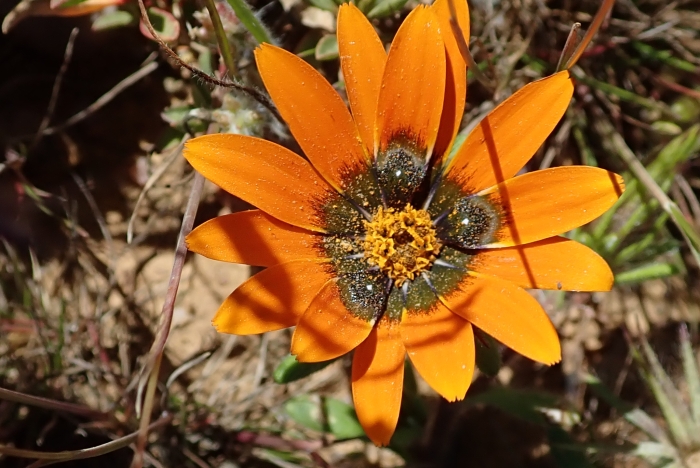Beetle Daisy
(Gorteria diffusa)
Beetle Daisy (Gorteria diffusa)
/
/

Peter Warren
Public Domain
Image By:
Peter Warren
Recorded By:
Copyright:
Public Domain
Copyright Notice:
Photo by: Peter Warren | License Type: Public Domain | License URL: http://creativecommons.org/publicdomain/zero/1.0/ | Rights Holder: Peter Warren | Publisher: iNaturalist | Date Created: 2018-09-04T13:10:06-07:00 |



















































Estimated Native Range
Summary
Gorteria diffusa, commonly known as Beetle Daisy, is a deciduous perennial herb native to the open sandy plains, dry regions, and occasionally near streams in South Africa and Namibia. It typically grows as a low-lying plant, initially erect but often becoming a creeping herb 2–20 cm (0.79–7.87 in) in height. Over time, some plants may become shrub-like. The Beetle Daisy is notable for its striking orange flowers, which bloom in spring and summer and are known for their variability in number, shape, color, and the presence of dark spots, which mimic beetles to attract pollinators—a phenomenon known as pseudocopulation.
The plant is valued for its unique flowers, which add a splash of color to rock gardens, borders, and as ground cover in sunny areas. It thrives in full sun and requires moderate watering, preferring well-drained soils. While it is drought-tolerant once established, it benefits from occasional watering during prolonged dry periods. Gardeners should be aware that the Beetle Daisy can vary significantly in appearance due to its high degree of morphological diversity.CC BY-SA 4.0
The plant is valued for its unique flowers, which add a splash of color to rock gardens, borders, and as ground cover in sunny areas. It thrives in full sun and requires moderate watering, preferring well-drained soils. While it is drought-tolerant once established, it benefits from occasional watering during prolonged dry periods. Gardeners should be aware that the Beetle Daisy can vary significantly in appearance due to its high degree of morphological diversity.CC BY-SA 4.0
Plant Description
- Plant Type: Herb
- Height: 0.5-1 feet
- Width: 1-2 feet
- Growth Rate: Moderate
- Flower Color: Orange
- Flowering Season: Spring, Summer
- Leaf Retention: Deciduous
Growth Requirements
- Sun: Full Sun
- Water: Medium
- Drainage: Medium
Common Uses
Low Maintenance, Rock Garden, Showy Flowers
Natural Habitat
Native to open sandy plains, dry regions, and occasionally near streams in South Africa and Namibia
Other Names
Common Names: Katoog, Daisy
Scientific Names: , Gorteria diffusa, Gorteria diffusa var. diffusa, Gorteria calandulacea,
GBIF Accepted Name: Gorteria diffusa Thunb.